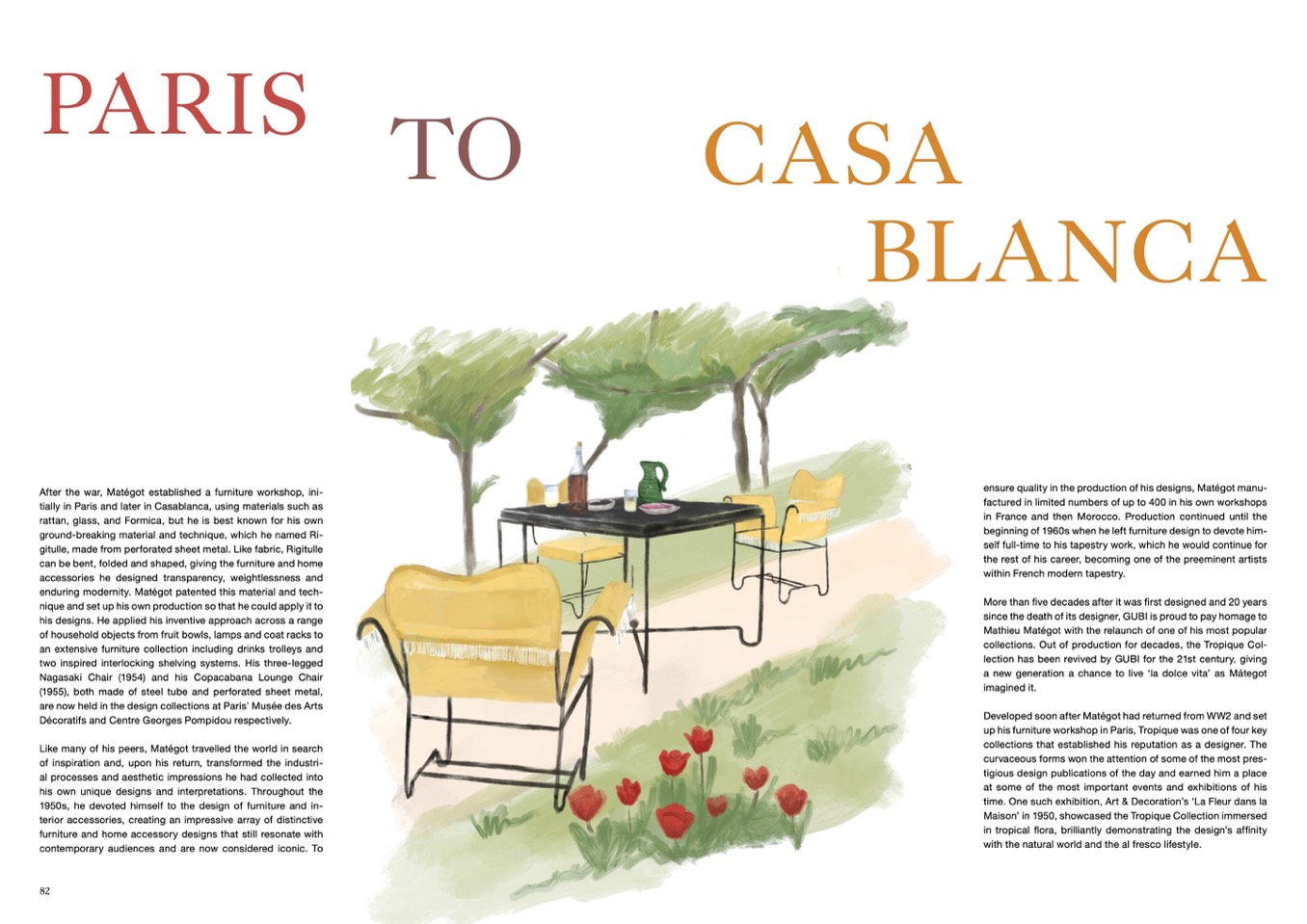
PARIS
TO
CASA
BLANCA
After the war, Matégot established a furniture workshop, ini-
tially in Paris and later in Casablanca, using materials such as
rattan, glass, and Formica, but he is best known for his own
ground-breaking material and technique, which he named Ri-
gitulle, made from perforated sheet metal. Like fabric, Rigitulle
can be bent, folded and shaped, giving the furniture and home
accessories he designed transparency, weightlessness and
enduring modernity. Matégot patented this material and tech-
nique and set up his own production so that he could apply it to
his designs. He applied his inventive approach across a range
of household objects from fruit bowls, lamps and coat racks to
an extensive furniture collection including drinks trolleys and
two inspired interlocking shelving systems. His three-legged
Nagasaki Chair (1954) and his Copacabana Lounge Chair
(1955), both made of steel tube and perforated sheet metal,
are now held in the design collections at Paris’ Musée des Arts
Décoratifs and Centre Georges Pompidou respectively.
Like many of his peers, Matégot travelled the world in search
of inspiration and, upon his return, transformed the industri-
al processes and aesthetic impressions he had collected into
his own unique designs and interpretations. Throughout the
1950s, he devoted himself to the design of furniture and in-
terior accessories, creating an impressive array of distinctive
furniture and home accessory designs that still resonate with
contemporary audiences and are now considered iconic. To
ensure quality in the production of his designs, Matégot manu-
factured in limited numbers of up to 400 in his own workshops
in France and then Morocco. Production continued until the
beginning of 1960s when he left furniture design to devote him-
self full-time to his tapestry work, which he would continue for
the rest of his career, becoming one of the preeminent artists
within French modern tapestry.
More than five decades after it was first designed and 20 years
since the death of its designer, GUBI is proud to pay homage to
Mathieu Matégot with the relaunch of one of his most popular
collections. Out of production for decades, the Tropique Col-
lection has been revived by GUBI for the 21st century, giving
a new generation a chance to live ‘la dolce vita’ as Mátegot
imagined it.
Developed soon after Matégot had returned from WW2 and set
up his furniture workshop in Paris, Tropique was one of four key
collections that established his reputation as a designer. The
curvaceous forms won the attention of some of the most pres-
tigious design publications of the day and earned him a place
at some of the most important events and exhibitions of his
time. One such exhibition, Art & Decoration’s 'La Fleur dans la
Maison’ in 1950, showcased the Tropique Collection immersed
in tropical flora, brilliantly demonstrating the design’s affinity
with the natural world and the al fresco lifestyle.
82

